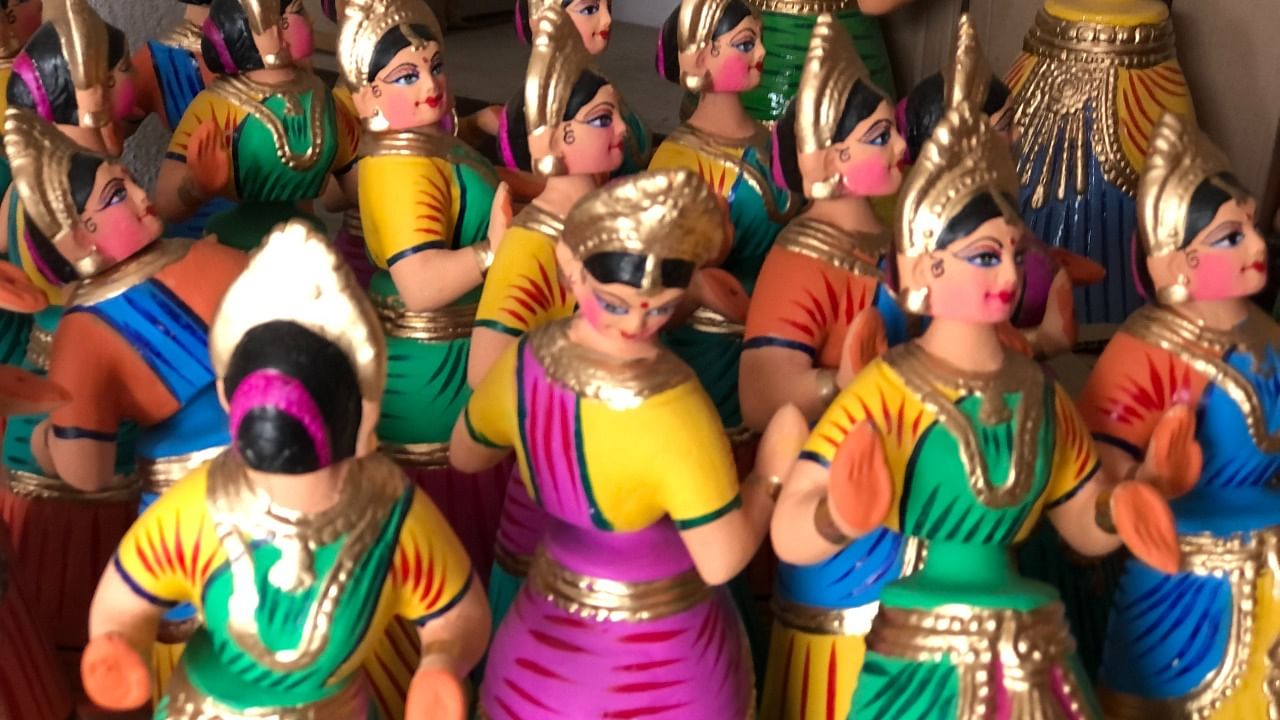
My fascination for Kondapalli started with a family heirloom—a faded, quaint wooden toy representing the deities Rama, Sita, Lakshman and Hanuman.
The miniature set in a frame was no mere toy; the handcrafted figurine was given to me by my mother, who had received it from her grandmother. Since then, it had become a permanent fixture in my Navaratri "golu"—the festive display of gods and goddesses, demons and mortals with stories crafted around them.
I eventually started collecting more wooden dolls and toys, and that passion took me to the portals of the Kondapalli village, located 25 km from Vijayawada in Andhra Pradesh.
All roads led to the Bommala Colony or the Toys Colony located in the village, home to about 80 families of artisans, tracing their origins to the patron saint of arts and crafts, Muktharishi, who Lord Shiva is said to have blessed.
Most of the workshops were fashioning toys out of the local softwood referred to as Tella Poniki or white sander. It is believed that these artisans, called Nakarshalu or Aryakhastriyas, migrated from Rajasthan and were later patronised by the local kings. The tradition is over 400 years old.
I was fascinated by the toys painted in vivid shades of vegetable dyes or vibrant enamel hues. The artisans explained that they now mix oil and water paints to bring out eye-popping colours.
The artisans elaborated on the process. Every part of the toy is chiselled separately from the soft and malleable wood and joined together with a paste of sawdust and a coarse powder made of tamarind seeds.
Scenes from mythology, especially those that featured Rama and Krishna were ubiquitous. I could also see tiny representations of Dasavatharam or the ten avatars of Lord Vishnu. Vignettes of life from rural life played out in front of me— a farmer in a bright red turban sitting on his bullock cart, a marriage procession, musicians, soldiers on elephant back, a toddy tapper and a snake charmer with a wooden cobra in a basket.
The artisans paid homage to fellow craftsmen and women by carving them in wood. The papier mache dancing girls with golden crowns shook their heads and swayed their hips gently. Every toy had such a charming appeal that I felt like a child in a candy store.
While its GI-tagged toys are its main draw, Kondapalli is also known for the Kondapalli Kota (fort) was built in the 14th century by the Reddy kings.
Scattered around the fort are crumbling ruins of towers, palaces, barracks and granaries. Water tanks and reservoirs add to the charm of the ruins. The fort may be the last vestige of the glory of the medieval rulers, but the ruins narrated a story of battles fought, lost and won.
(Lakshmi Sharath is a storyteller, travel writer, blogger and media professional from Bengaluru.)